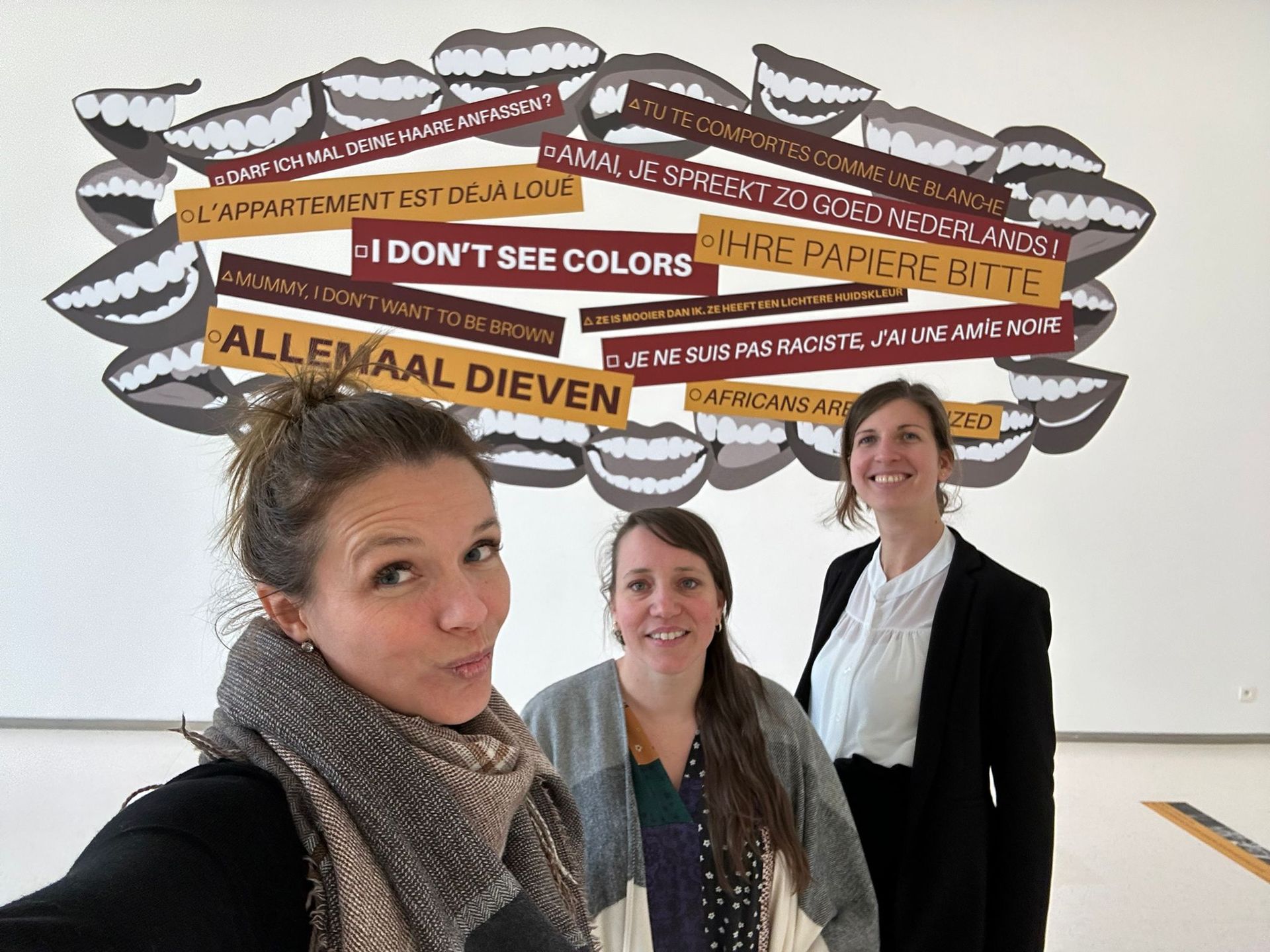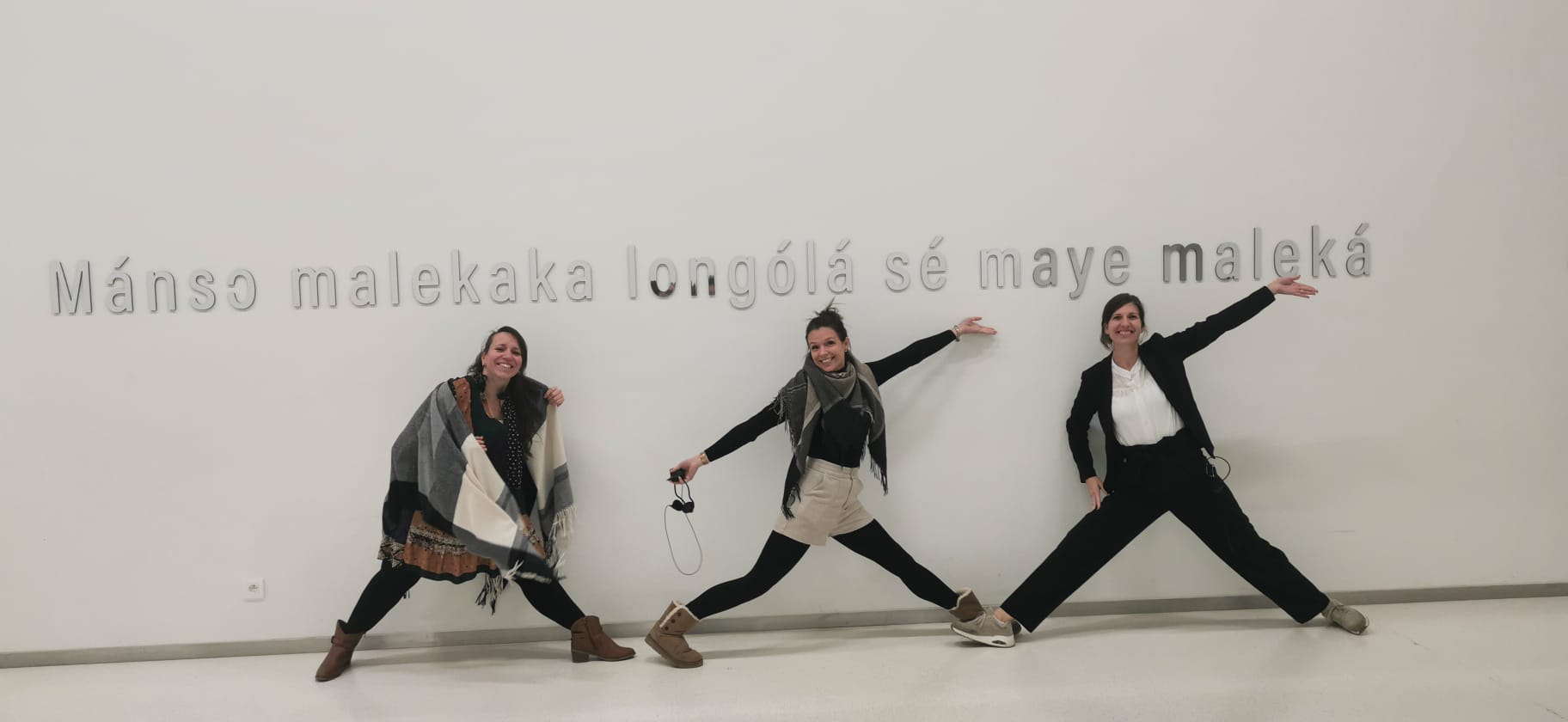A journey through the African museum in Brussels
As I prepare for my final teaching internship in Hoedspruit, South Africa, I found it fitting to visit the African Museum in Brussels. This museum holds a deep connection to the continent I will soon immerse myself in, providing valuable insights and a profound reflection on Africa's rich cultural heritage and the complexities of its history.
A welcoming encounter with diversity
One of the most striking installations in the museum is the vibrant display of phrases and expressions that confront visitors with the realities of prejudice and racism. As seen in the first photo, phrases like "I don't see colors," "You speak such good Dutch," and "I'm not racist, I have a black friend" are plastered on a wall surrounded by images of mouths. These phrases, often said with ignorance or condescension, challenge visitors to reflect on their own bases and the impact of their words.

Exploring cultural artifacts

The second photo captures a unique wooden artifact. Its detailed craftsmanship and expressive features convey a deep connection to traditional African art and cultural practices. This artifact is a testament to the ingenuity and creativity of African artisans, showcasing the continent's diverse artistic expressions.
Joyful engagement with African languages
In the final photo, my friends and I are seen posing in front of a wall displaying the phrase "Mánsə malekaka longólá sé maye maleká." This phrase, written in an African language, invites visitors to embrace the linguistic diversity of the continent. The joy and excitement on our faces reflect the museum's ability to inspire and educate visitors about the beauty and complexity of African languages.

Reflection and connection
Visiting the African Museum in Brussels was not just an educational experience but also a deeply personal journey. As a 34-year-old mother and soon-to-be kindergarten teacher, this visit allowed me to reflect on the importance of cultural inclusivity and understanding. The museum's exhibits provided a window into the lives, struggles, and triumphs of African people, enriching my perspective as I prepare to engage with the local community in Hoedspruit.
Conclusion
The African Museum in Brussels serves as a powerful reminder of the need to honor and respect the diverse cultures and histories of Africa. It challenges visitors to confront their own prejudices and embrace a more inclusive worldview. As I embark on my journey to South Africa, the lessons learned from this visit will undoubtedly shape my approach to teaching and community engagement, fostering a spirit of empathy and cultural appreciation in my future classroom.